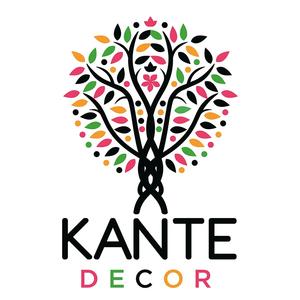ABOUT US
Two women inspired by the artisans’ work, who believe the future of design is closely linked to our cultures’ roots.
Some designs tendencies are drifting away from the sterile and the meaningless to get closer to the source of design itself; culture. This doesn’t mean that ancestral designs cannot coexist with modern ones. On the contrary.

Kante means Tree in the Mayan language native to Mexico.
In Kante we love the culture that comes from indigenous roots and all the different forms of expression that come as a manifestation of this culture. We are moved to share a little bit of what we consider an age-old culture that is art in itself and that we would not want it to disappear.
Traditions are formed in the most intimate of a culture and often that culture is found in remote and inaccessible places. Kante is formed from the idea of making accessible what was previously considered inaccessible. We are excited about the idea of being able to bring a piece of that remote and ancestral culture to you or your home. Kante is very interested in the preservation of this culture through a dignified trade and a close relationship with our producers. Finally, in Kante we also believe that the ancestral does not necessarily have to look old or outdated. We are moved by the idea of incorporating tradition into contemporary design and into daily life.

Location: Downtown Hollywood Mural Project
Our Artisans
Unrecognized artists create unique, handmade pieces using ancestral techniques. These teachings are passed down from generation to generation thus keeping alive a vibrant culture and an admirable trade.
They tell stories through their crafts, inspired by everything they see in their surroundings.
“To weave we need a space and a time; we sit down looking at our house, our family and mother nature. We get inspired combining the colors and shapes we see. You only weave when your heart is at peace”.
– Words of an Artisan –

Hand Embroidery
To knit and to embroider is to have the ability to observe. The artisans use different techniques such as cross stitch or “hilvan” style embroidery to capture their culture’s worldview. Worldview is an element that ceases to be abstract once it gets captured on a figure or pattern. The artistic expressions of each community allow us to understand its social fabric and to acknowledge that behind the artisans’ work there’s a creative community that supports them. Today, Mazahua women, part of one of the largest ethnic groups in central Mexico, keep their ancestors memories alive by describing the surroundings and their feelings through the images in the embroideries.
Loom
Mesoamerica, a region and cultural area in the Americas, extending from central Mexico through Belize, Guatemala, El Salvador, Honduras, Nicaragua and Costa Rica was home to highly advanced cultures. Among their many artistic expressions embroidery always stood up as their most iconic one. They use what we know today as a waist loom and agave fibers and cotton as their main raw materials. This technique is frequently used in Oaxaca and Chiapas in Southwestern Mexico and consists in weaving thread using a wooden loom which is tied to a tree on one end and to the artisan’s waist on the other. Today, indigenous groups continue to use the waist loom to make their own clothes and to also produce amazing pieces of art.
Palm Weaving
The process of manufacturing a petate (palm mat) is an arduous one. It all starts by cutting the palms leaves and drying them in the sun. The best ones are selected for weaving. Due to immigration to the cities this technique has lost many artisans; estimates indicate that palm weaving is down 70% from 30 years ago. The entire process of weaving a small palm purse takes between two and three days and it’s done 100% by hand. Today, the embroidery used on palm crafts are inspired on Puebla’s typical dress known as China Poblana which is embroidered with beads and sequin.
